
|
Now it is 9.0 mag (Feb. 14, Carlos Labordena). It stays bright as 8-9 mag until July. It is observable in good condition in the Northern Hemisphere. In the Southern Hemisphere, it is not observable until July.
Date(TT) R.A. (2000) Decl. Delta r Elong. m1 Best Time(A, h)
Feb. 22 2 6.01 60 5.5 1.716 1.886 83 8.8 19:12 (145, 50)
Feb. 29 2 8.52 61 10.2 1.738 1.840 79 8.7 19:18 (145, 46)
|

|
Now it is bright as 10.0 mag (Feb. 19, Maik Meyer). It stays bright as 10 mag until late April. In the Northern Hemisphere, it stays observable for a long time, although it becomes extremely low in March. In the Southern Hemisphere, it is not observable until June when it fades down to 13 mag. It seems to be a fragment of C/1988 A1 (Liller), like C/1996 Q1 (Tabur) and C/2015 F3 (SWAN).
Date(TT) R.A. (2000) Decl. Delta r Elong. m1 Best Time(A, h)
Feb. 22 23 53.38 10 57.5 1.614 0.936 32 10.8 19:12 ( 95, 14)
Feb. 29 23 56.75 16 48.3 1.582 0.886 30 10.5 19:18 (104, 11)
|
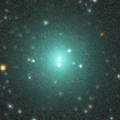
|
Now it is very bright as 10.6 mag (Feb. 21, Maik Meyer). It will be fading gradually after this. It is observable in good condition in the Northern Hemisphere. It is not observable in the Southern Hemisphere.
Date(TT) R.A. (2000) Decl. Delta r Elong. m1 Best Time(A, h)
Feb. 22 19 55.77 66 15.3 0.913 1.238 81 11.2 5:14 (210, 40)
Feb. 29 22 31.20 77 7.0 0.947 1.311 85 11.6 5:06 (195, 31)
|

|
Now it is 12.4 mag (Jan. 29, Maik Meyer). It stays bright as 12-13 mag until summer. But it becomes low in spring. In the Southern Hemisphere, it will never be observable again.
Date(TT) R.A. (2000) Decl. Delta r Elong. m1 Best Time(A, h)
Feb. 22 23 50.40 45 23.8 3.666 3.280 59 12.4 19:12 (127, 29)
Feb. 29 23 56.04 46 39.0 3.736 3.301 56 12.5 19:18 (131, 25)
|

|
Brightening very rapidly. Now it is very bright as 12.5 mag (Feb. 18, Michael Mattiazzo). It moves along the same orbit as C/1844 Y1 (Great Comet). It approaches to Sun down to 0.25 a.u. on May 30. It is expected to brighten up to 3 mag. In the Northern Hemisphere, it stays observable in excellent condition until mid May when it brightens up to 6 mag. In the Southern Hemisphere, it is not observable until June.
Date(TT) R.A. (2000) Decl. Delta r Elong. m1 Best Time(A, h)
Feb. 22 11 24.91 53 49.5 1.314 2.130 134 13.4 1:22 (180, 71)
Feb. 29 11 6.02 57 59.7 1.236 2.019 129 13.0 0:36 (180, 67)
|

|
It brightened in outburst on Feb. 3. It is bright as 13.6 mag still now (Feb. 18, Sandor Szabo). It is already unobservable in the Southern Hemisphere. It will be unobservable in mid March also in the Northern Hemisphere.
Date(TT) R.A. (2000) Decl. Delta r Elong. m1 Best Time(A, h)
Feb. 22 0 54.85 14 37.3 6.429 5.790 46 13.8 19:12 ( 89, 28)
Feb. 29 0 59.65 15 1.9 6.507 5.791 40 13.8 19:18 ( 93, 22)
|
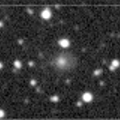
|
Now it is bright as 13.8 mag (Dec. 28, Chris Wyatt). It stays 14 mag until spring. It stays observable for a long time in the Southern Hemisphere. It is not observable until August in the Northern Hemisphere.
Date(TT) R.A. (2000) Decl. Delta r Elong. m1 Best Time(A, h)
Feb. 22 1 15.43 -61 27.6 3.904 3.519 60 14.2 19:12 ( 26,-18)
Feb. 29 1 25.32 -58 49.8 3.934 3.533 59 14.3 19:18 ( 30,-19)
|

|
In the Southern Hemisphere, it is observable at 14.5 mag from winter to spring. In the Northern Hemisphere, it is not observable until August when it fades down to 17 mag.
Date(TT) R.A. (2000) Decl. Delta r Elong. m1 Best Time(A, h)
Feb. 22 1 20.94 -62 59.6 2.288 2.016 61 14.3 19:12 ( 25,-18)
Feb. 29 1 52.58 -58 21.8 2.292 2.022 61 14.4 19:18 ( 28,-15)
|
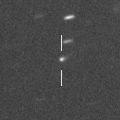
|
Now it is 15.1 mag (Feb. 14, Hirohisa Sato). It will brighten up to 13.5-14 mag from 2020 to 2021. It stays observable in good condition for a while.
Date(TT) R.A. (2000) Decl. Delta r Elong. m1 Best Time(A, h)
Feb. 22 13 16.57 14 4.8 2.639 3.423 136 14.8 3:13 ( 0, 69)
Feb. 29 13 14.86 14 42.5 2.565 3.405 142 14.7 2:43 ( 0, 70)
|
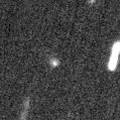
|
Now it is 15.6 mag (Jan. 4, Toshihiko Ikemura, Hirohisa Sato). It will brighten up to 10.5 mag from 2020 December to 2021 January. In the Northern Hemisphere, it stays observable in good condition while the comet will be brightening gradually, but it is not observable at the high light. In the Southern Hemisphere, it is not observable for a long time, but it will be observable in good condition after the high light.
Date(TT) R.A. (2000) Decl. Delta r Elong. m1 Best Time(A, h)
Feb. 22 18 38.02 64 45.7 3.723 3.780 85 15.1 5:14 (209, 48)
Feb. 29 18 41.64 66 5.7 3.650 3.715 86 15.0 5:06 (206, 49)
|

|
Now it is very bright as 14.4 mag (Feb. 14, Taras Prystavski). Taras Prystavski reported it has a coma of 1.5 arcmin. It will approach to Sun down to 0.9 a.u. in June, and it is extected to brighten up to 10 mag. In the Southern Hemisphere, it stays observable in good condition for a long time after this. In the Northern Hemisphere, it will be unobservable from late March to late June.
Date(TT) R.A. (2000) Decl. Delta r Elong. m1 Best Time(A, h)
Feb. 22 3 55.22 -26 29.7 2.034 2.106 80 15.8 19:12 ( 21, 25)
Feb. 29 3 55.76 -25 58.8 2.021 2.017 75 15.6 19:18 ( 28, 23)
|

|
Now it is 15.5 mag (Feb. 18, Sandor Szabo). It will be fading after this, and will be fainter than 18 mag in May. In the Northern Hemisphere, it is observable in excellent condition. It locates low in the Southern Hemisphere.
Date(TT) R.A. (2000) Decl. Delta r Elong. m1 Best Time(A, h)
Feb. 22 4 35.34 14 55.5 1.181 1.628 96 15.6 19:12 ( 28, 68)
Feb. 29 4 52.19 14 10.9 1.251 1.646 93 15.8 19:18 ( 36, 65)
|
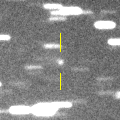
|
First return of a new periodic comet discovered in 2006. It brightened up to 14.9 mag in January (Jan. 21, R. Fichtl). It will never be observable after this.
Date(TT) R.A. (2000) Decl. Delta r Elong. m1 Best Time(A, h)
Feb. 22 23 49.52 -8 50.6 2.601 1.730 22 15.6 19:12 ( 78, 2)
Feb. 29 0 8.58 -7 25.7 2.607 1.718 20 15.6 19:18 ( 82, -1)
|

|
Now it is 14.6 mag (Dec. 28, Chris Wyatt). It will be fading slowly after this. In the Southern Hemisphere, it becomes low from February to March, but it stays observable for a long time. In the Northern Hemisphere, it is not observasble until June.
Date(TT) R.A. (2000) Decl. Delta r Elong. m1 Best Time(A, h)
Feb. 22 23 8.36 -44 1.4 4.349 3.586 35 15.7 19:12 ( 53,-25)
Feb. 29 23 15.27 -42 25.1 4.384 3.618 35 15.8 19:18 ( 57,-29)
|

|
It brightened up to 7.7 mag in June in 2018 (June 19, Juan Jose Gonzalez). Now it is fading. It has already faded down to 15.8 mag (Jan. 31, Kunihiro Shima). In the Southern Hemisphere, it stays observable for a long time until the comet will fade out. In the Northern Hemisphere, it stays low for a while.
Date(TT) R.A. (2000) Decl. Delta r Elong. m1 Best Time(A, h)
Feb. 22 5 32.02 -24 16.0 5.751 6.035 102 15.8 19:25 ( 0, 31)
Feb. 29 5 30.87 -23 0.9 5.883 6.091 97 15.9 19:18 ( 6, 32)
|

|
Now it is 15.3 mag (Jan. 5, Toshihiko Ikemura, Hirohisa Sato). It is expected to be observable at 5-6 mag for a long time from 2022 to 2023. In the Northern Hemisphere, it is not observable at the high light from 2022 summer to 2023 summer. In the Southern Hemisphere, it stays unobservable for a while. But it will be observable in good condition at the high light.
Date(TT) R.A. (2000) Decl. Delta r Elong. m1 Best Time(A, h)
Feb. 22 18 13.29 46 59.6 9.896 9.757 79 15.9 5:14 (236, 56)
Feb. 29 18 15.35 47 26.2 9.813 9.708 81 15.8 5:06 (235, 58)
|
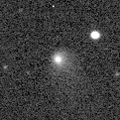
|
Now it is 14.8 mag (Dec. 28, Chris Wyatt). Fading slowly. Now it is not observable. It will appear in the morning sky in April in the Southern Hemisphere, or in June in the Northern Hemisphere.
Date(TT) R.A. (2000) Decl. Delta r Elong. m1 Best Time(A, h)
Feb. 22 23 36.88 -15 44.4 6.018 5.099 19 15.9 19:12 ( 75, -5)
Feb. 29 23 41.72 -14 38.1 6.083 5.135 15 15.9 19:18 ( 79,-10)
|
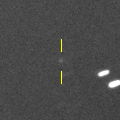
|
Now it is 17.2 mag (Feb. 2, C. Rinner, F. Kugel). It will brighten very rapidly after this. It will brighten up to 8-9 mag from summer to autumn. It will be observable in excellent condition in the Southern Hemisphere. It locates very low around the high light in the Northern Hemisphere.
Date(TT) R.A. (2000) Decl. Delta r Elong. m1 Best Time(A, h)
Feb. 22 13 42.66 -5 36.6 1.772 2.491 126 16.3 3:39 ( 0, 49)
Feb. 29 13 43.33 -5 33.3 1.657 2.446 133 15.9 3:12 ( 0, 49)
|
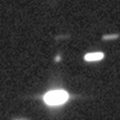
|
Now it is 16.2 mag (Feb. 5, C. Rinner, F. Kugel). It will brighten up to 13 mag in 2021. In 2020, it is observable at 15 mag in good condition from spring to summer.
Date(TT) R.A. (2000) Decl. Delta r Elong. m1 Best Time(A, h)
Feb. 22 15 2.65 -15 48.7 5.212 5.548 104 16.0 4:58 ( 0, 39)
Feb. 29 15 2.26 -16 18.6 5.059 5.505 111 15.9 4:31 ( 0, 39)
|

|
It will be fading slowly after this. In the Southern Hemisphere, it stays observable in good condition for a long time. It will never be observable after this in the Northern Hemisphere.
Date(TT) R.A. (2000) Decl. Delta r Elong. m1 Best Time(A, h)
Feb. 22 13 38.83 -74 2.7 4.797 4.895 89 16.3 3:36 ( 0,-19)
Feb. 29 13 14.86 -75 14.3 4.774 4.939 93 16.3 2:45 ( 0,-20)
|
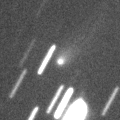
|
Now it is 16.2 mag (Jan. 21, Thomas Lehmann). The orbit is extremely hyperbolic with e=3.35. It is the first interstellar comet in history. It will be fading after this, and will be fainter than 18 mag in April. In the Southern Hemisphere, it is observable in excellent condition. In the Northern Hemisphere, it will never be observable again.
Date(TT) R.A. (2000) Decl. Delta r Elong. m1 Best Time(A, h)
Feb. 22 12 57.55 -63 33.1 2.249 2.608 99 16.4 2:54 ( 0, -9)
Feb. 29 12 58.28 -65 33.9 2.316 2.708 102 16.7 2:27 ( 0,-11)
|
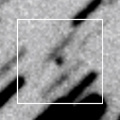
|
Now it is 16.5 mag (Dec. 27, Toshihiko Ikemura, Hirohisa Sato). It stays observable at 17 mag from 2020 to 2021. It locates somewhat low in the Northern Hemisphere.
Date(TT) R.A. (2000) Decl. Delta r Elong. m1 Best Time(A, h)
Feb. 22 10 53.07 -24 54.1 5.778 6.600 143 16.5 0:49 ( 0, 30)
Feb. 29 10 51.07 -24 33.7 5.740 6.596 147 16.5 0:20 ( 0, 30)
|

|
Now it is 16.3 mag (Jan. 19, Toshihiko Ikemura, Hirohisa Sato). It will be fading gradually after this. It will be fainter than 18 mag in April.
Date(TT) R.A. (2000) Decl. Delta r Elong. m1 Best Time(A, h)
Feb. 22 8 59.60 8 15.0 2.172 3.122 160 16.5 22:52 ( 0, 63)
Feb. 29 8 55.38 8 48.1 2.239 3.154 152 16.7 22:20 ( 0, 64)
|
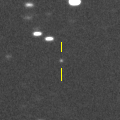
|
Now it is 17.2 mag (Feb. 2, D. Buczynski). It will brighten up to 16 mag in March, and it will be observable in good condition.
Date(TT) R.A. (2000) Decl. Delta r Elong. m1 Best Time(A, h)
Feb. 22 11 22.80 42 2.9 0.850 1.757 145 16.7 1:20 (180, 83)
Feb. 29 11 6.98 40 13.2 0.817 1.736 147 16.6 0:37 (180, 85)
|

|
It looks cometary on the LCO (CTIO) image on Aug. 21, 2019. Now it is 16.2 mag (Oct. 2, ATLAS-MLO, Mauna Loa). It is appearing in the mornign sky in the Southern Hemisphere. It will be observable in late March also in the Northern Hemisphere.
Date(TT) R.A. (2000) Decl. Delta r Elong. m1 Best Time(A, h)
Feb. 22 20 8.23 -31 9.6 7.282 6.513 36 16.7 5:14 (305, -5)
Feb. 29 20 9.53 -30 54.4 7.213 6.521 42 16.7 5:06 (307, -2)
|
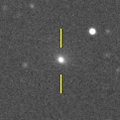
|
Now it is 15.5 mag (Jan. 20, Toshihiko Ikemura, Hirohisa Sato). It will be fading slowly after this.
Date(TT) R.A. (2000) Decl. Delta r Elong. m1 Best Time(A, h)
Feb. 22 1 49.05 6 57.9 2.789 2.371 55 16.7 19:12 ( 73, 35)
Feb. 29 2 1.62 8 17.5 2.864 2.381 51 16.8 19:18 ( 78, 31)
|
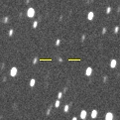
|
Now it is 16.7 mag (Dec. 3, D. Buczynski). It will stay at 14 mag for a long time from 2021 to 2022. In the Northern Hemisphere, it stays observable in good condition while brightening gradually. In the Southern Hemisphere, it will appear in the morning sky soon. But it stays locating low for a long time.
Date(TT) R.A. (2000) Decl. Delta r Elong. m1 Best Time(A, h)
Feb. 22 19 10.23 29 56.5 7.238 6.809 60 16.8 5:14 (259, 42)
Feb. 29 19 12.21 30 10.1 7.157 6.775 63 16.7 5:06 (260, 45)
|

|
Now it is 17.7 mag (Feb. 2, D. Buczynski). It stays 16-17 mag for a long time until 2020. It is observable in good condition in the Northern Hemisphere. In the Southern Hemisphere, it is observable in the extremely low sky only in 2021 spring.
Date(TT) R.A. (2000) Decl. Delta r Elong. m1 Best Time(A, h)
Feb. 22 13 25.70 55 25.2 8.142 8.709 122 16.8 3:22 (180, 70)
Feb. 29 13 22.90 55 42.3 8.140 8.719 123 16.8 2:51 (180, 69)
|

|
Now it is 16.8 mag (Feb. 2, Catalina Sky Survey). It will brighten up to 16.5 mag and will be observable in good condition in March.
Date(TT) R.A. (2000) Decl. Delta r Elong. m1 Best Time(A, h)
Feb. 22 13 31.91 -1 25.9 1.353 2.131 130 16.9 3:28 ( 0, 53)
Feb. 29 13 33.28 -1 18.3 1.302 2.136 136 16.9 3:02 ( 0, 54)
|
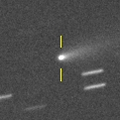
|
Now it is 15.6 mag (Jan. 22, Thomas Lehmann). It will fade out rapidly after this, and it will be fainter than 18 mag in March.
Date(TT) R.A. (2000) Decl. Delta r Elong. m1 Best Time(A, h)
Feb. 22 11 24.67 15 19.9 1.125 2.091 163 17.1 1:21 ( 0, 70)
Feb. 29 11 20.75 15 58.5 1.149 2.129 168 17.4 0:50 ( 0, 71)
|

|
Fading. Now it is 17.2 mag (Dec. 28, Hidetaka Sato). It is observable at 17 mag in good condition in spring. But it will be fainter than 18 mag in June.
Date(TT) R.A. (2000) Decl. Delta r Elong. m1 Best Time(A, h)
Feb. 22 17 31.63 -6 33.8 2.993 2.826 70 17.1 5:14 (316, 38)
Feb. 29 17 39.94 -5 56.1 2.952 2.869 75 17.1 5:06 (319, 40)
|

|
Now it is 16.8 mag (Jan. 21, Toshihiko Ikemura, Hirohisa Sato). It brightens up to 17 mag until March. It is not observable in the Southern Hemisphere.
Date(TT) R.A. (2000) Decl. Delta r Elong. m1 Best Time(A, h)
Feb. 22 1 23.67 19 39.4 1.780 1.455 54 17.2 19:12 ( 90, 37)
Feb. 29 1 43.10 22 46.2 1.821 1.465 53 17.2 19:18 ( 95, 35)
|

|
Fading. Now it is 17.6 mag (Feb. 1, Catalina Sky Survey). It stays observable in good condition for a while. But it will be fainter than 18 mag in April.
Date(TT) R.A. (2000) Decl. Delta r Elong. m1 Best Time(A, h)
Feb. 22 7 59.58 23 36.7 6.273 7.102 144 17.4 21:52 ( 0, 79)
Feb. 29 7 54.67 23 27.5 6.395 7.146 136 17.4 21:20 ( 0, 78)
|

|
Now it is 19.0 mag (Jan. 28, Mt. Lemmon Survey). It will brighten up to 17 mag and will be observable in excellent condition from March to May.
Date(TT) R.A. (2000) Decl. Delta r Elong. m1 Best Time(A, h)
Feb. 22 12 59.79 -6 41.2 1.351 2.175 136 17.5 2:56 ( 0, 48)
Feb. 29 13 0.49 -6 33.9 1.287 2.163 143 17.4 2:29 ( 0, 48)
|
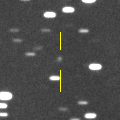
|
Now it is 17.4 mag (Dec. 28, Toshihiko Ikemura, Hirohisa Sato). It stays observable at 16.5 mag for a long time from 2020 to 2021. In the Northern Hemisphere, it is observable in excellent condition for a long time. In the Southern Hemisphere, it is not observable until 2021 summer.
Date(TT) R.A. (2000) Decl. Delta r Elong. m1 Best Time(A, h)
Feb. 22 1 0.33 70 47.7 6.495 6.498 85 17.5 19:12 (157, 41)
Feb. 29 1 3.76 69 55.7 6.552 6.479 81 17.5 19:18 (155, 39)
|

|
Now it is 17.2 mag (Nov. 25, ATLAS-MLO). It brightened up to 14 mag from autumn to winter in 2018. Now it is fading. It is observable at 17.5 mag in good condition from winter to spring.
Date(TT) R.A. (2000) Decl. Delta r Elong. m1 Best Time(A, h)
Feb. 22 13 43.34 -3 15.4 3.794 4.461 127 17.6 3:39 ( 0, 52)
Feb. 29 13 39.94 -3 18.2 3.747 4.501 134 17.5 3:08 ( 0, 52)
|

|
Now it is 18.0 mag (Jan. 29, ATLAS-MLO, Mauna Loa). It will brighten up to 13 mag in 2022. In 2020, it is observable at 17.5 mag in good condition in spring. It locates somewhat low in the Southern Hemisphere.
Date(TT) R.A. (2000) Decl. Delta r Elong. m1 Best Time(A, h)
Feb. 22 10 35.52 20 49.0 3.577 4.552 168 17.6 0:32 ( 0, 76)
Feb. 29 10 31.04 21 13.3 3.571 4.539 166 17.6 0:00 ( 0, 76)
|

|
It will be observable at 16.5-17 mag from spring in 2020 to summer in 2021.
Date(TT) R.A. (2000) Decl. Delta r Elong. m1 Best Time(A, h)
Feb. 22 19 58.92 19 44.1 5.700 5.060 45 17.7 5:14 (264, 27)
Feb. 29 20 0.62 19 54.3 5.632 5.038 49 17.7 5:06 (266, 31)
|
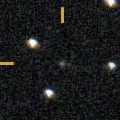
|
Now it is 17.7 mag (Jan. 24, ATLAS-MLO, Mauna Loa). It is observable at 17-18 mag for a long time from late 2019 to early 2021. It will fade out before it passes the perihelion.
Date(TT) R.A. (2000) Decl. Delta r Elong. m1 Best Time(A, h)
Feb. 22 3 1.33 5 21.0 5.198 4.986 72 17.7 19:12 ( 55, 47)
Feb. 29 3 4.89 5 58.3 5.287 4.973 66 17.8 19:18 ( 63, 42)
|
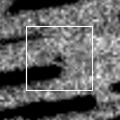
|
It is observable at 17.5 mag in good condition until spring.
Date(TT) R.A. (2000) Decl. Delta r Elong. m1 Best Time(A, h)
Feb. 22 17 23.01 -17 48.9 2.361 2.252 71 17.8 5:14 (326, 30)
Feb. 29 17 33.85 -17 51.7 2.307 2.278 75 17.8 5:06 (328, 30)
|

|
Now it is 17.5 mag (Feb. 3, ATLAS-HKO, Haleakala). It will be fainter than 18 mag in late April.
Date(TT) R.A. (2000) Decl. Delta r Elong. m1 Best Time(A, h)
Feb. 22 12 43.79 8 51.1 9.935 10.752 144 17.8 2:40 ( 0, 64)
Feb. 29 12 42.81 9 10.5 9.894 10.769 150 17.8 2:11 ( 0, 64)
|
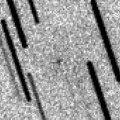
|
It approached to Earth down to 0.09 a.u. in early January, and it brightened up to 16.7 mag (Jan. 21, Toshihiko Ikemura, Hirohisa Sato). Now it is fading. Now it is 17.5 mag (Jan. 31, Ken-ichi Kadota). It is obesrvable in excellent condition in the Northern Hemisphere. It became observable also in the Southern Hemisphere.
Date(TT) R.A. (2000) Decl. Delta r Elong. m1 Best Time(A, h)
Feb. 22 9 33.28 38 17.0 0.343 1.299 150 17.8 23:27 (180, 87)
Feb. 29 9 38.74 34 59.2 0.412 1.360 149 18.3 23:04 ( 0, 90)
|

|
It will brighten up to 15.5 mag and will be observable in good condition from June to September.
Date(TT) R.A. (2000) Decl. Delta r Elong. m1 Best Time(A, h)
Feb. 22 18 26.17 -9 42.8 3.012 2.608 56 17.9 5:14 (306, 27)
Feb. 29 18 37.82 -8 52.7 2.913 2.581 60 17.8 5:06 (307, 29)
|
|
![]()
 114P/Wiseman-Skiff
114P/Wiseman-Skiff 390P/2019 U1 ( Gibbs )
390P/2019 U1 ( Gibbs ) C/2018 A6 ( Gibbs )
C/2018 A6 ( Gibbs ) C/2016 M1 ( PanSTARRS )
C/2016 M1 ( PanSTARRS ) C/2017 K2 ( PanSTARRS )
C/2017 K2 ( PanSTARRS ) C/2017 B3 ( LINEAR )
C/2017 B3 ( LINEAR ) 88P/Howell
88P/Howell C/2019 F1 ( ATLAS-Africano )
C/2019 F1 ( ATLAS-Africano ) C/2017 M4 ( ATLAS )
C/2017 M4 ( ATLAS ) 2I/2019 Q4 ( Borisov )
2I/2019 Q4 ( Borisov ) C/2019 C1 ( ATLAS )
C/2019 C1 ( ATLAS ) 78P/Gehrels 2
78P/Gehrels 2 124P/Mrkos
124P/Mrkos A/2017 U7
A/2017 U7 101P/Chernykh
101P/Chernykh C/2018 U1 ( Lemmon )
C/2018 U1 ( Lemmon ) C/2010 U3 ( Boattini )
C/2010 U3 ( Boattini ) P/2019 Y2 ( Fuls )
P/2019 Y2 ( Fuls ) 155P/Shoemaker 3
155P/Shoemaker 3 C/2019 F2 ( ATLAS )
C/2019 F2 ( ATLAS ) 112P/Urata-Niijima
112P/Urata-Niijima C/2015 O1 ( PanSTARRS )
C/2015 O1 ( PanSTARRS ) 87P/Bus
87P/Bus C/2019 T3 ( ATLAS )
C/2019 T3 ( ATLAS ) (944) Hidalgo
(944) Hidalgo 117P/Helin-Roman-Alu 1
117P/Helin-Roman-Alu 1 C/2017 Y2 ( PanSTARRS )
C/2017 Y2 ( PanSTARRS ) 173P/Mueller 5
173P/Mueller 5 175P/Hergenrother
175P/Hergenrother C/2014 B1 ( Schwartz )
C/2014 B1 ( Schwartz ) 289P/Blanpain
289P/Blanpain 257P/Catalina
257P/Catalina![]()



































